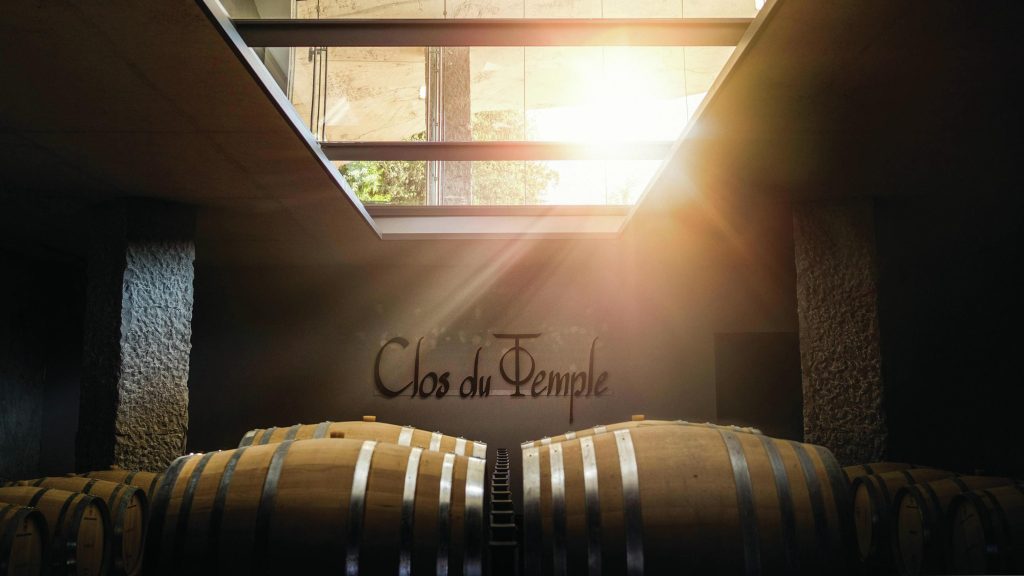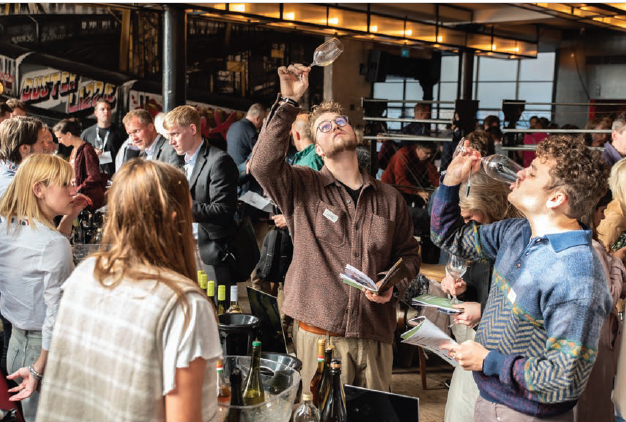Super-premium rosé: the Inner Temple
Gérard Bertrand has become one of the masters of super-premium rosé with the launch in 2018 of Clos du Temple, the most expensive pink on the market and the apex of his blush range. What is it that makes this expression so acclaimed?
Clos du Temple, the world’s most expensive rosé, an award-winning, biodynamic, barrel-fermented drop with great ageability is “the ultimate experience of rosé for us”, according to its winemaker, Languedoc legend Gérard Bertrand.
“It invites the consumer to discover the alchemy between an exceptional terroir of altitude limestone and schist and a will to create a rosé with a potential of ageing”, he explains.
The wine comes from Cabrières, an exceptional terroir in the heart of the Languedoc that was once described by King Louis XIV as the best place for rosé in France. The carefully selected 12- hectare plot, which is subdivided into 11 parcels, lies 240 metres above sea level, where the schist and limestone meet above a subterranean water complex deep in the undulating hills. This provides exceptional conditions for vines – and a Grand Cru terroir, Bertrand says.
Working biodynamically is “essential” on such terroir, he insists. “It preserves the soil, the quintessence of the terroir, and reveals its most beautiful expression,” he explains.
And as with whites, rosés can be vinified and aged in barrels to reveal the terroir, freshness and minerality of the wine, in addition to the fruit aromas. “The barrel allows structure, and gives a better ageing potential to the rosés, while developing other aromatic families,” he says. “In the barrel fermentation we are looking for: woody, toasted, and aged notes that will make it a wine to keep.”
Part of the harvest is retained to vinify in concrete vats. “What we are looking for with concrete tanks is micro-oxygenation (compared with stainless steel, which is completely inert), more minerality and salinity, which is exactly what we want in Clos du Temple,” he explains.

His concern is all about the verticality of the wines, its evolution over time to better understand the effect of growing conditions in different vintages, winemaking techniques, and the percentages in the assemblage. “Clos du Temple is elaborated with great precision and attention,” he says. “Every detail counts: from the vine to the bottle, the hand-harvest, the parcel selection, the choice of the barrels, a part vinified in concrete vats, the ageing in barrels, and, of course, the blending, an art to which I love to devote myself.”
Old Cinsault vines, Grenache noir, and Syrah provide the wine’s structure, with Mourvèdre enhancing it, and an “unexpected” addition of Viognier contributing to the complexity of the cuvée through its aromatic notes.
‘I’ve created Clos du Temple to be an iconic fine wine made with an exceptional potential of ageing’
Bertrand argues that super-premium rosé has all the assets to be a wonderful wine with which to celebrate great occasions. “These super-premium rosés belong to the world market, and have already proved their worth,” he notes, pointing to the enthusiastic reception of Clos du Temple from some of the world’s greatest wine experts and international judges.
Sommeliers are showing great interest in the super-premium rosé category, in part due to the wine’s ability to be paired with gourmet dishes. They are increasingly experimenting with new tasting experiences, as well as filling their cellars with rosés to keep.
Partner Content
According to Bertrand, the potential ageing these wines can take is easily about 20 years.
“I’ve created Clos du Temple to be an iconic fine wine made with an exceptional potential of ageing,” he explains.
It is for this reason that he is keeping back bottles each year to demonstrate the way each vintage matures over time – in terms of colour, freshness and aromatic profile. “It is incredible demonstrating that this high-end rosé can compete with the greatest crus in the world, and can be a great wine to keep too,” Bertrand notes.

And there’s never been a better time for super-premium rosé – interest in rosé styles in general is still rocketing thanks to the popularity of Provençal pinks, spurring a growing base of rosé wine lovers and super-premium rosé lovers to seek out higher-level profiles.
Provence has shown how far rosé has come, from a wine that winemakers themselves used to deem “second-rate”, to one that has made the world sit up and take notice.
“From the moment when the winemaker takes the rosé wines seriously and lavishes them with as much attention as his red and white wines, then the consumer finds an echo, and the rosé wine starts rising up the price list,” he explains.
AUDACIOUS PACKAGING
Although it has been argued that the rosé market is more defined by convention and consumer expectations than any other, Bertrand considers that it also benefits from the audacity of its winemaking and packaging
“I’ve always brought the same attention to rosé wines as to my red and white wines,” he says, “That’s how Gris Blanc, Cote des Roses rosé, Source of Joy, and, of course, the Clos du Temple were born.”
For example, with his Gris Blanc, he blended a Grenache gris and Grenache noir to create a new and very pale colour, inspiring both the name of the wine, and its white- and grey-striped bottles. His Cote des Roses rosé was launched next, an AOP Languedoc with a constant profile, in a very distinctive bottle. And finally, Clos du Temple, inspired by the specific terroir in Cabrières, and housed in an elegant bottle with a square pyramidical punt, rising to a circular shoulder with a delicate band of gold showing the undulating hills that surround the vineyard, and which symbolise the cosmos and the principles of Bertrand’s biodynamics.
It’s no wonder that this wine is helping to put the spotlight on the exciting potential of rosé as a major category.
Related news
Behind the label: Alto Adige and the question of language





